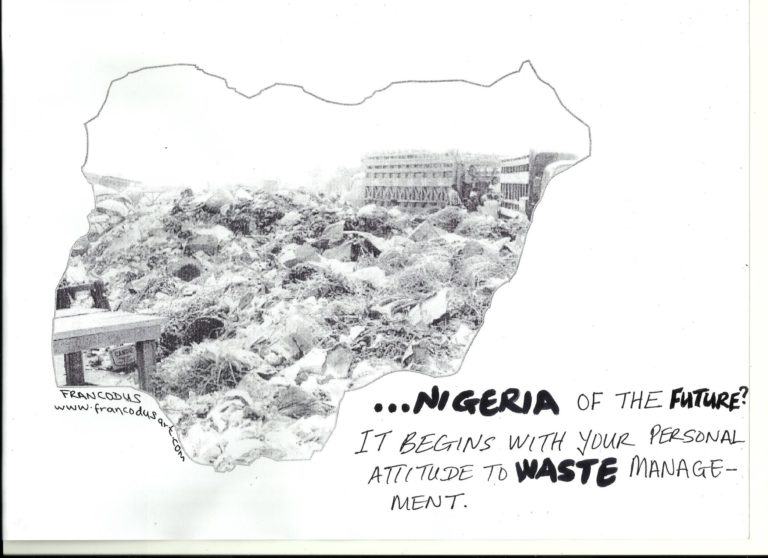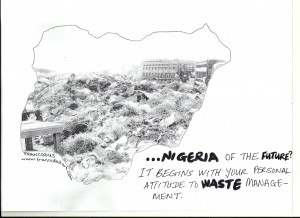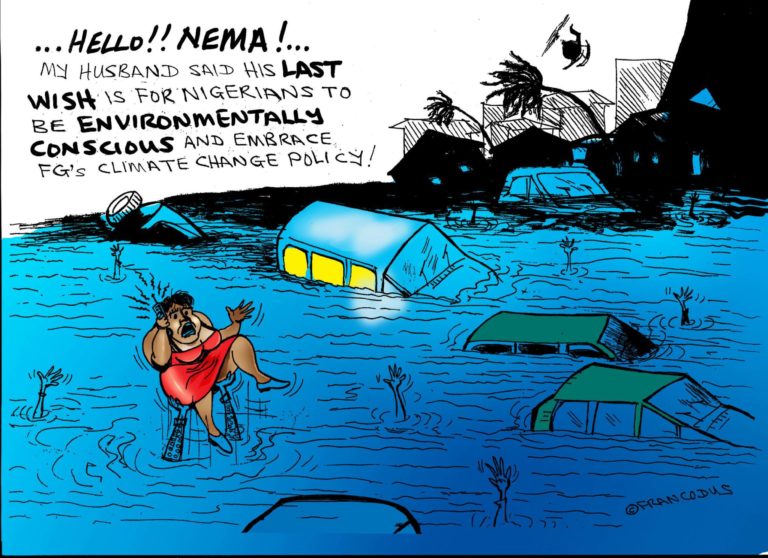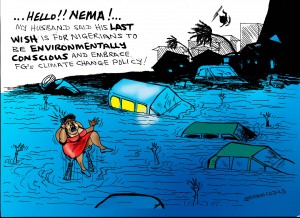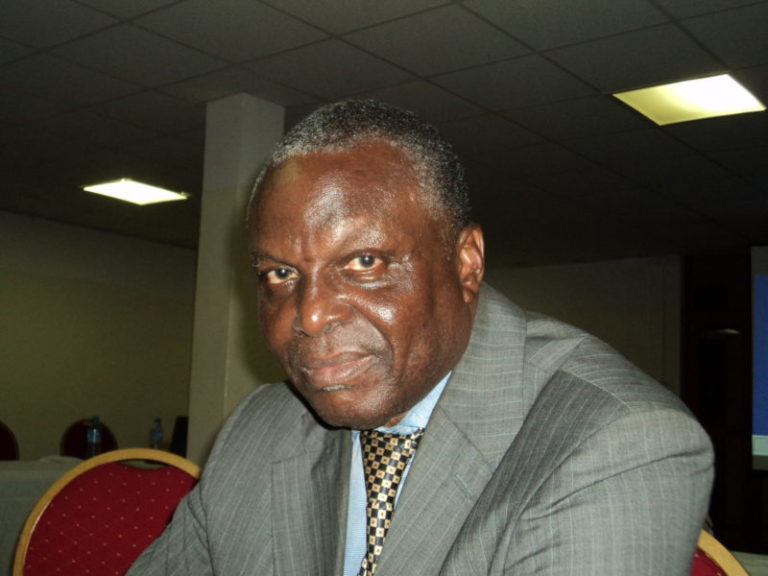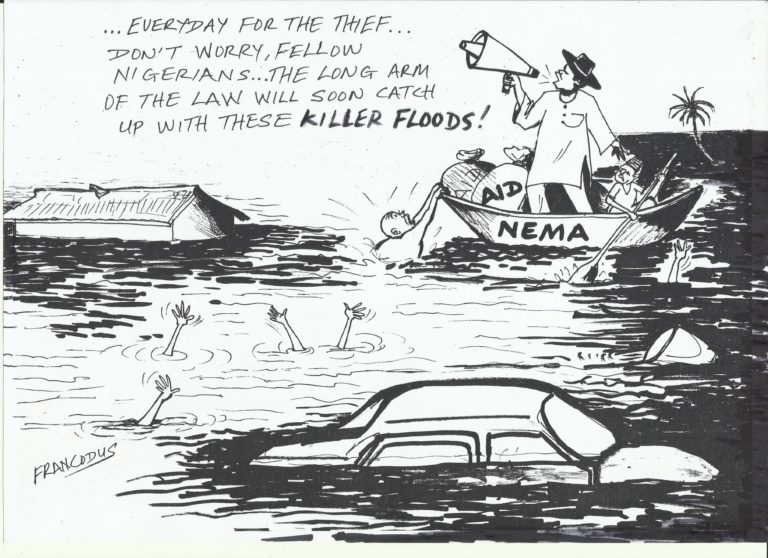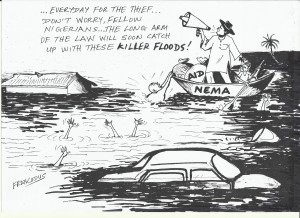6
Effectively managing water resources to curb poverty
Renowned personalities and friends of the earth including school children gathered recently in Lagos to observe the 12th S. L. Edu Memorial Lecture series organised by the Nigerian Conservation Foundation (NCF) and Chevron Nigeria Limited, where participants underlined the need to effectively manage the nation’s water resources in order to reduce poverty.
Indeed, concrete steps were recommended at the federal, state and local government levels to value water appropriately, promote its wise use and conservation by establishing appropriate water conservation guidelines and practices for an integrated water resources management as one of the ways to achieve climate resilient water resources management for national development.
Besides, governments at all levels were urged to design and sustain water supply infrastructure based on ecological principles and adaptation to a changing climate; conduct comprehensive and continuous monitoring of surface and ground water resources to provide up-to-date information required to manage water effectively in a changing climate and advance policy reform, while championing a new water ethic in the face of changing climate.
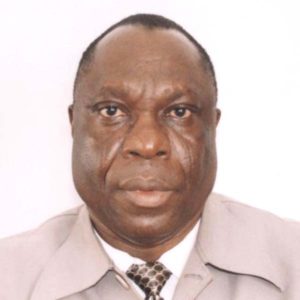
In a presentation titled: “Climate Resilient Water Resources Management for Poverty Reduction in Nigeria”, renowned climatologist, Professor Emmanuel Oladipo, said Nigeria’s water sector is highly vulnerable to global warming-induced climate change.
Formerly of the Ahmadu Bello University, Zaria, Oladipo stated that climate extreme events cause floods and drought with dire consequences for the availability and use of water, adding that climate change has a cumulative effect on water resource balance with its effects already visible in the country.
He explained that extreme weather events that are capable of negatively affecting the country’s water resources have become more frequent in the recent past particularly, adding that the 2012 flood disaster witnessed in more than half of the states of the country is a pointer to Nigeria’s vulnerability to climate-change induced extreme weather events with long-term return periods.
Linking water resources management to poverty reduction, Oladipo argued that water management can be a catalyst for a pro-poor economic growth, particularly at local level, where it provides vital inputs into productive activities and creates opportunities for local entrepreneurs in supplying technologies, constructing facilities and providing services.
“Thus, there is a general consensus that water management has the potential to contribute to all of the MDGs (millennium development goals) in different ways. However, in the face of changing climatic conditions the imperative for resilient water management becomes critical to effectively harness the contribution of water to development and particularly poverty reduction,” he said.
The Professor of Geography explained that, with an estimated 319.2 billion cubic metres of surface and ground water resources, Nigeria is endowed with abundant water resources to support agriculture, irrigation, transportation, energy and sustainable provision of water supply and adequate sanitation, saying that, in this regard, Nigeria is not, on the average, a water-stressed country.
He stressed that water is essential not only for sustaining quality of life on the earth, but also for economic growth and poverty reduction.
Oladipo added: “Reliable, adequate and high quality water is vital for economic development and well-being. Access to safe and adequate water improves health, fulfils multiple needs of households, contribute to food and fibre production and poverty elimination. Due to rapid increase in population, the demand for water in Nigeria will increase over time.
“The challenge will be to meet increasing demand in the face of changing climate. Nigeria may face a water crisis not only because of possible climate change-induced physical scarcities of the resources, but because of poor knowledge, experience, technology and co-ordinating among different institutions.
“Better management coupled with effective policy, intensified political will, appropriate investments, awareness, climatic change adaptation and institutional strengthening are promising pathways for sustainable water resources management.”
The guest-lecturer called for adaptation strategies such as capacity development for smart-decision making for resilient water resources management, policy, regulatory and institutional reforms for water supply and demand management; improved hydrometric network; good river basin governance and scale-up regional cooperation particularly along the Niger and Benue basins and catchment areas.
Oladipo also prescribed integrated water resources management (IWRM) to promote integrated river basin management; resilient water supply infrastructure development; improving water demand management and services; economic instruments/incentives; investments in small-scale earth dams in place of conventional large-scale dams and adoption of water conservation and harvest practices.
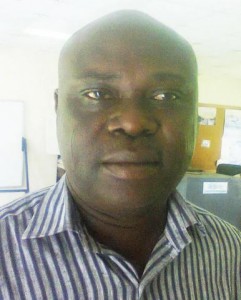
Acting Executive Director of NCF, Alade Adeleke, in his introductory remarks, said NCF over the years identified the importance of water and wetland and promoting the need for its management.
He urged more Nigerians to join the group so that they can have the opportunity to understand the nation’s environmental challenges and proffer solutions to same.

President of NCF Trustees, Chief Philip Asiodu, said the group had over the years advocated sustainable management of the nation’s environment. He disclosed that, at present, there are about 1,000 advocacy clubs in schools.
He commended Chevron for supporting the programme over the years.
IPCC publishes full report of 2013 climate assessment
 Warming of the climate system is unequivocal, human influence on the climate system is clear, and limiting climate change will require substantial and sustained reductions of greenhouse gas emissions. These are the key conclusions from an assessment by the Intergovernmental Panel on Climate Change (IPCC) that was released on Thursday in its full and finalised form.
Warming of the climate system is unequivocal, human influence on the climate system is clear, and limiting climate change will require substantial and sustained reductions of greenhouse gas emissions. These are the key conclusions from an assessment by the Intergovernmental Panel on Climate Change (IPCC) that was released on Thursday in its full and finalised form.
The Summary for Policymakers of the IPCC Working Group I assessment report, “Climate Change 2013: the Physical Science Basis,” was approved in September 2013 by the member governments of the IPCC meeting in Stockholm, Sweden, who also accepted the underlying report, after which the Summary for Policymakers was immediately made public.
The full report is the basis for the key conclusions presented in the Summary for Policymakers. This Working Group I contribution to the IPCC’s Fifth Assessment Report offers a comprehensive understanding of the physical science basis of climate change. Policymakers, stakeholders and the scientific community are now able to use and apply the detailed information on which IPCC Working Group I bases its assessment. Additional material documents the IPCC assessment process with its multiple rounds of drafting and review.
“The Working Group I Fifth Assessment Report, which has over 1,500 printed pages of text and includes more than 600 printed diagrams, provides a comprehensive assessment of the physical science basis of climate change, citing more than 9000 scientific publications. The report provides information about what has changed in the climate system, why it has changed, and how it will change in the future,” said Thomas Stocker, Co-Chair of IPCC Working Group I.
The full report consists of the Summary for Policymakers, a longer Technical Summary, 14 chapters and six annexes including an Atlas of Global and Regional Climate Projections. The Atlas is an innovation in this Working Group I assessment, containing time series and maps of temperature and precipitation projections for 35 regions of the world, which enhance accessibility for stakeholders and users. As well as the printed Atlas, there are four sets of Atlas Supplementary Material with 155 figures each, and the data underlying the Atlas figures will also be made available as part of the launch.
Another innovative feature of this report is the presentation of Thematic Focus Elements in the Technical Summary that provide end-to-end assessments of important cross-cutting issues for understanding the physical science basis of climate change, such as water cycle change, irreversibility and abrupt change, climate sensitivity and feedbacks, climate targets and stabilisation.
All chapters contain Frequently Asked Questions in which the authors provide scientific answers to a range of general questions in an accessible form.
In order to document the drafting and review process, the IPCC is making public the earlier drafts of the report that were subject to formal review, all 54,677 written review comments by expert and government reviewers on those drafts and the responses by the authors to the comments. All figures from the Summary for Policymakers, the Technical Summary, and from the 14 Chapters of the report are also being made available electronically in order to facilitate outreach and communications activities that wish to highlight IPCC findings. Extensive Supplementary Material can be accessed online and includes description of datasets, models, or methodologies used in some chapters of the assessment. Background information on all the figures in the Summary for Policymakers is provided in the Supplementary Material to the Technical Summary.
“I would like to thank the hundreds of scientists and experts around the world who served as authors and review editors for producing a comprehensive and scientifically robust assessment. I also express my thanks to the more than one thousand expert reviewers for contributing their expertise in the preparation of this assessment,” said Qin Dahe, the other Co-Chair of WGI, from Beijing, China.
Climate change: The Loss and Damage
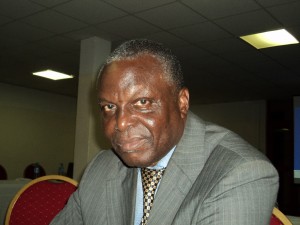
The nineteenth session of the Conference of the Parties (COP19) to the United Nations Convention on Climate Change (UNFCCC) and the ninth session of the Conference of Parties Serving as the Meeting of Parties to the Kyoto Protocol (CMP/MOP9, among other associated meetings, held from 11th to 23rd November, 2013 in Warsaw, Poland. One of the major outcomes of the conference is the Warsaw International Mechanism for Loss and Damage associated with climate change impacts.
This piece attempts to highlight some key issues and implications for government, business and the society.
In 2010, the COP16 decided to establish a work programme to consider approaches to dealing with Loss and Damage from the impact of climate change in the developing countries which are particularly venerable to the adverse effects of climate change. The most venerable countries are supposed to benefit ultimately through this programme from improved protection against loss and damage caused by extreme metrological phenomenon linked to climate change. This is a very significant step forward as the developed countries frequently prefer to avoid any decision likely to involve their responsibility.
In Doha in 2012, the establishment of an institutional arrangement for the mechanism for Loss and Damage proved somehow controversial. The developing countries proposed it but developed countries opposed it. It took an all-night last minute negotiation for a text to be agreed on the establishment of an institutional arrangement at COP19 in Warsaw, Poland.
The conference stressed the role of the convention in providing the implementation of approaches to address Loss and Damage to include:
- Enhancing knowledge and understanding of comprehensive risk management approaches.
- Strengthening dialogue among relevant stakeholders.
- Enhancing action and support including finance, technology and capacity building to address Loss and Damage.
The Parties (member countries) were invited to enhance action addressing Loss and Damage by (a) designing and implementing country – driver risk management strategies and approaches,
(b) implementing comprehensive climate risk management approaches and (c) promoting an enabling environment that would encourage investment and the involvement of relevant stakeholders in climate risk management.
The COP requested developed county parties to provide developing country parties finance, technology and capacity building.
In COP19, after series of negotiations it was agreed to, as proposed by the President of COP19, that an institutional mechanism including functions and modalities to address Loss and Damage associated with the impact of climate change in developing countries are particularly vulnerable to the adverse effects of climate change be established.
The Warsaw International Mechanism for Loss and Damage under the Cancun Adaptation Framework is “to address Loss and Damage associated with impacts of climate change including extreme events and slow onset events in developing countries that are particularly vulnerable to the adverse effect of climate change.”
The Warsaw Mechanism is expected to promote the implementation of approaches to address Loss and Damage associated with the adverse effects of climate change, provide leadership, enhance knowledge and understanding of comprehensive risk management approaches to address Loss and Damage, collection, sharing, management and use of relevant data and information.
The Implications
The UNFCCC Loss and Damage mechanism has raised fundamental issues in knowledge and understanding of comprehensive management approaches.
The impact of Loss and Damage associated with climate change is likely to increase the incidence and severity of poverty in countries that are vulnerable to climate change. In Nigeria there are evidences of loss associated with climate change – agriculture-wash-away of crops leading to poor harvest, health – disease outbreak and increasing climate impacts on vulnerable regions.
As climate change continues unabated, economic losses from extreme weather events and natural disasters are expected to increase. In Nigeria, climate change has implications for development. The 2012 flood experience showed that losses caused by weather -related natural catastrophes are enormous. As the frequency and scope of losses due to natural catastrophes increase there is a growing need to explore meaningful risk transfer options for managing and mitigating climate change risks. One of such feasible option is climate risk insurance.
Approach
The path of reducing poverty and vulnerability through climate risk insurance can be a business case that can provide window of opportunities for insurance companies.
The impact of Loss and Damage associated with climate change is likely to increase the incidence and severity of poverty in Nigeria.
Poverty is a root cause of vulnerability as low income individuals have fewer resources to absorb extreme weather shocks. By increasing their ability to manage as well as to mitigate weather-related risks, climate risk insurance has the potential to play a significant role in reducing vulnerability and contributing to social and economic well-being.
It is important for us as a nation to get to the drawing board and see how Nigeria can benefit from different global climate finance opportunities. The negotiation is still on-going and the implementation options can include such elements as climate risk management facility, capacity building, filling data gaps and identifying financial needs.
The most vulnerable countries to Loss and Damage due to climate change should not look for one solution or fold their arms; rather they should consider various tools that can be implemented at various levels.
It is suggested that (i) we consider future needs associated with possible approaches to address the risk elements, (ii) invest in preparing technical papers on non-economic losses and on gaps in existing institutional arrangement globally to address loss and damage, and (iii) design and implement country-driven risk management strategies and approaches.
It is clear that even without taking climate change into account, disaster risk will continue to increase as more people and assets are exposed to weather extreme. It is therefore desirable that we embark on capacity building, training and involvement of all stakeholders in addressing the challenges and opportunities in the Loss and Damage.
By Prince Lekan Fadina
Prince Fadina is a Negotiator in the United Nations System on Climate Change, Sustainable Development and Trade. He is Executive Director, Centre for Investment, Sustainable Development, Management and Environment (CISME)
Savvy, razzmatazz of Davos

The World Economic Forum (WEF) has emerged as an international forum that unites political and business leaders as well as journalists from across the globe to discuss and shape global, regional and industrial agendas with regard to economics, health and the environment.
The WEF is a Swiss non-profit foundation based in Cologny, Geneva. Describing itself as an independent international organisation committed to improving the state of the world, it is best known for its annual meeting in Davos, a mountain resort in Graubünden, in the eastern Alps region of Switzerland. The meeting brings together some 2,500 top business leaders, international political leaders, selected intellectuals and journalists to discuss the most pressing issues facing the world.
This year’s edition held during the past week from Wednesday to Saturday, with Nigeria featuring prominently and President Goodluck Jonathan saying his administration is enhancing inclusive growth in the country through policies and programmes that focus on wealth creation rather than poverty alleviation.
Jonathan said in Davos that African governments must likewise earnestly promote inclusive economic growth on the continent to avoid problems associated with poverty and financial equality. He argued that, with Africa’s population projected to exceed two billion persons by the year 2050, wealth creation and job creation must remain at the top of the continent’s developmental agenda.
Essentially, the 2014 WEF meeting sought to develop insights, initiatives and actions necessary to respond to current and emerging global challenges. The theme focused on “The Reshaping of the World: Consequences for Society, Politics and Business.”
Conflict and political unrest have been prevalent running up to this year’s meeting. In the wake of the Arab spring, incessant unrest in North Africa and the Middle East continue to limit the potential for peace and economic prosperity in the region. The war in Syria has resulted in more than two million refugees seeking safety in neighbouring countries, such as Lebanon, Jordan and Turkey.
These nations have been struggling with the magnitude of the crisis. According to the UN, close to nine million Syrian people are in desperate need of foreign aid. These are but some of the challenges faced by political and business leaders in their pursuit of making the world a better place.
Apart from the various socio-economic dilemmas that have developed as a result of conflict and political unrest, dialogue at Davos was also shaped by global environmental, social and economic issues such as climate change, multilateral trade as well as the post-2015 development agenda. Climate change in particular was top priority at Davos this year.
One distinguished attendee was Africa’s richest man, Aliko Dangote, who is co-chair of the annual meeting. As of March, 2013 his wealth was estimated by Forbes to be in the region of $16.1 billion.
A dedicated philanthropist and the founder of Dangote Group, West Africa’s largest publicly listed corporation, the Nigerian was also appointed to the United Nations’ Global Education First Initiative (GEFI) launched by Ban Ki-Moon.
Echoing the UN Secretary-General’s advocacy for improving access to education, the GEFI basically aims to put every single child in school. Klaus Schwab wrote in his invitation letter to Dangote that his “participation as co-chair will contribute significantly to the substance and relevance of exchanges between global leaders from government, business, academia, civil society, and the media at the forum.”
In spite of the media attention Davos receives for the protests, the exclusivity, the lavish dinners, the alleged million dollar parties thrown by tech billionaires and the speculation about the private words exchanged outside of the official sessions; there was possibly no better stage for the most influential men and women to meet and discuss how to make the world a better place. When one is able to see the wealth and influence of the participants as a force for positive change, Davos-Klosters can be seen as a platform for incredible political, social and economic progression.
The Forum was founded in 1971 by Klaus Schwab, a German-born business professor at the University of Geneva. First named the “European Management Forum”, it changed its name to the World Economic Forum in 1987 and sought to broaden its vision further to include providing a platform for resolving international conflicts.
Political leaders soon began to use the annual meeting as a neutral platform. The Davos Declaration was signed in 1988 by Greece and Turkey, helping them turn back from the brink of war. In 1992, South African President F. W. de Klerk met with Nelson Mandela and Chief Mangosuthu Buthelezi at the annual meeting, their first joint appearance outside South Africa. At the 1994 annual meeting, Israeli Foreign Minister Shimon Peres and PLO Chairman Yasser Arafat reached a draft agreement on Gaza and Jericho.
The Forum engages its members in sector-specific initiatives such as the Global Health Initiative (launched by Kofi Annan in 2002), Global Education Initiative (2003), Environmental Initiative that covers climate change and water (2005), Water Initiative and Partnering Against Corruption Initiative (2004).
The organisation also convenes some six to eight regional meetings each year in locations such as Latin America and East Asia, as well as undertaking two further annual meetings in China and the United Arab Emirates. Beside meetings, the foundation produces a series of research reports.



